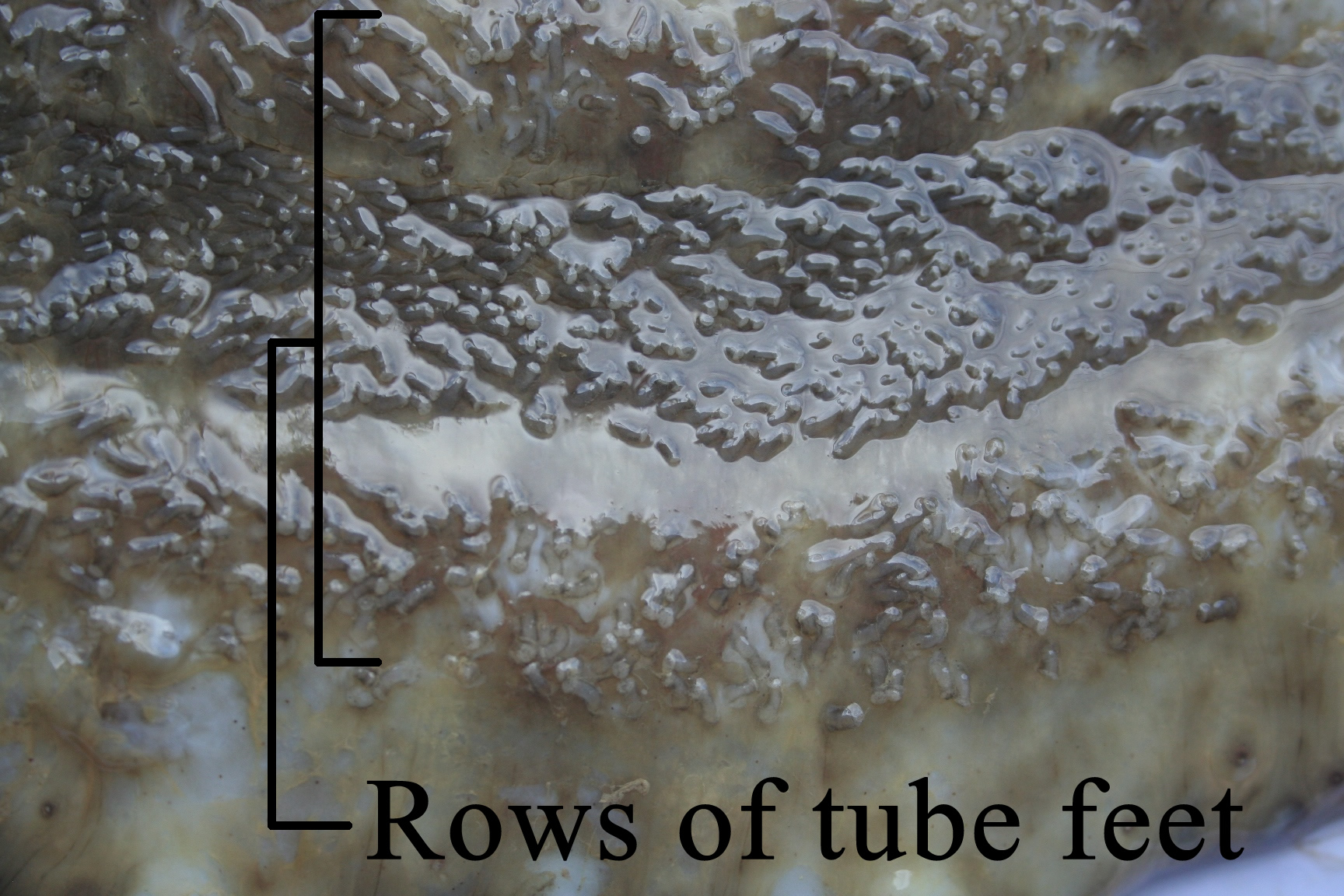Stichopus hermanni Semper, 1868
Hermann's sea cucumberOverview
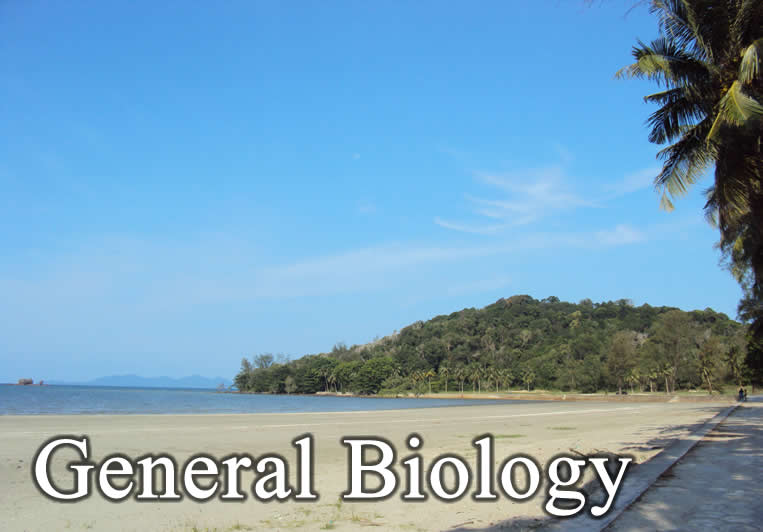
 Photo [[#|credit]]: Clarissa Wei |
| Photo: Carmon Kee© |
| Photo: Carmon Kee© |
| Photo Credit: Ria Tan |
General Biology
- General Overview of Sea Cucumber
Nervous system- No true brain, no distinctive sensory organ. However, there are five major nerves run from the nerve ring down length of the body beneath each of the ambulacral areas. [1]
Respiratory system- Extraction of oxygen from water with a pair of respiratory trees that branch off the cloaca just inside the anus, thus respiration is done by drawing water in through the anus and then expelling it.Interestingly, the respiratory trees also act as excretory organs, with nitrogenous waste diffusing across the tubule walls in the form of ammonia and phagocytic coelomocytes depositing particulate waste.[1]
Circulatory system- Sea cucumber possess both water vascular system that provides hydraulic pressure to the tentacles and tube feet which enable movement and also a haemal system which consists of well-developed vessels as well as open sinuses.[1]
- Feeding
- Habitat preference
- Defence and protection
- Internal Anatomy
- Reproduction
Spawning pattern is observed particularly in S.hermanni. When spawing, S.hermanni erect on the top of rocky pinnacles. It sways slowly while releasing dribbles of gametes. Sexual reproduction of this species takes place during the warm season. Its potential fecundity is low and sexual maturity is late as compared to the other Holothuridae studied, which makes it vulnerable to over exploitation.[3]
- Distribution and native range
Adapted from [[#|google]] map.
Distribution: Tropical region, Indo-west Pacific Ocean also distributed in Australia. Locations shown in the map where the locations which are mentioned in several scientific papers as this particular species is not widely studied, its distribution remains unclear.
Species Dianogsis
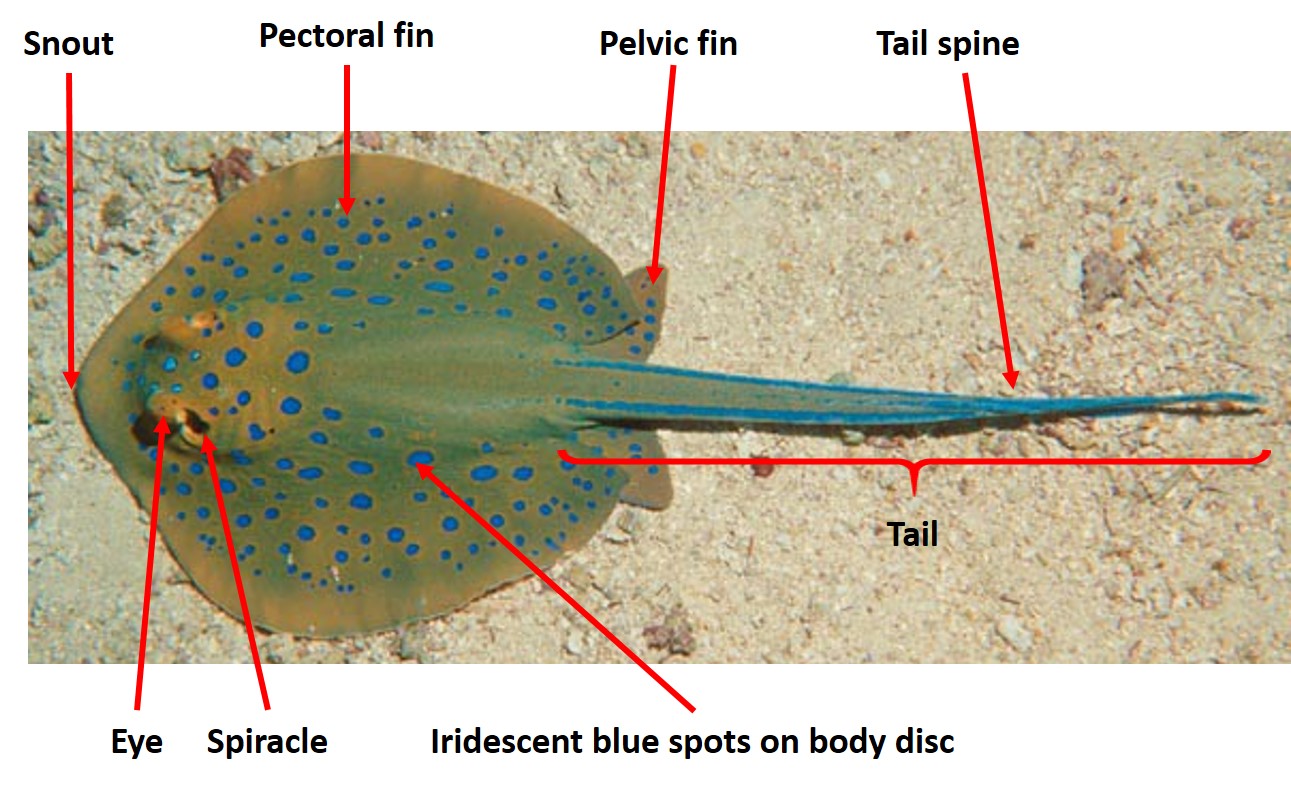 Dorsal view of Stichopus hermanni. Photo: Carmon Kee© |
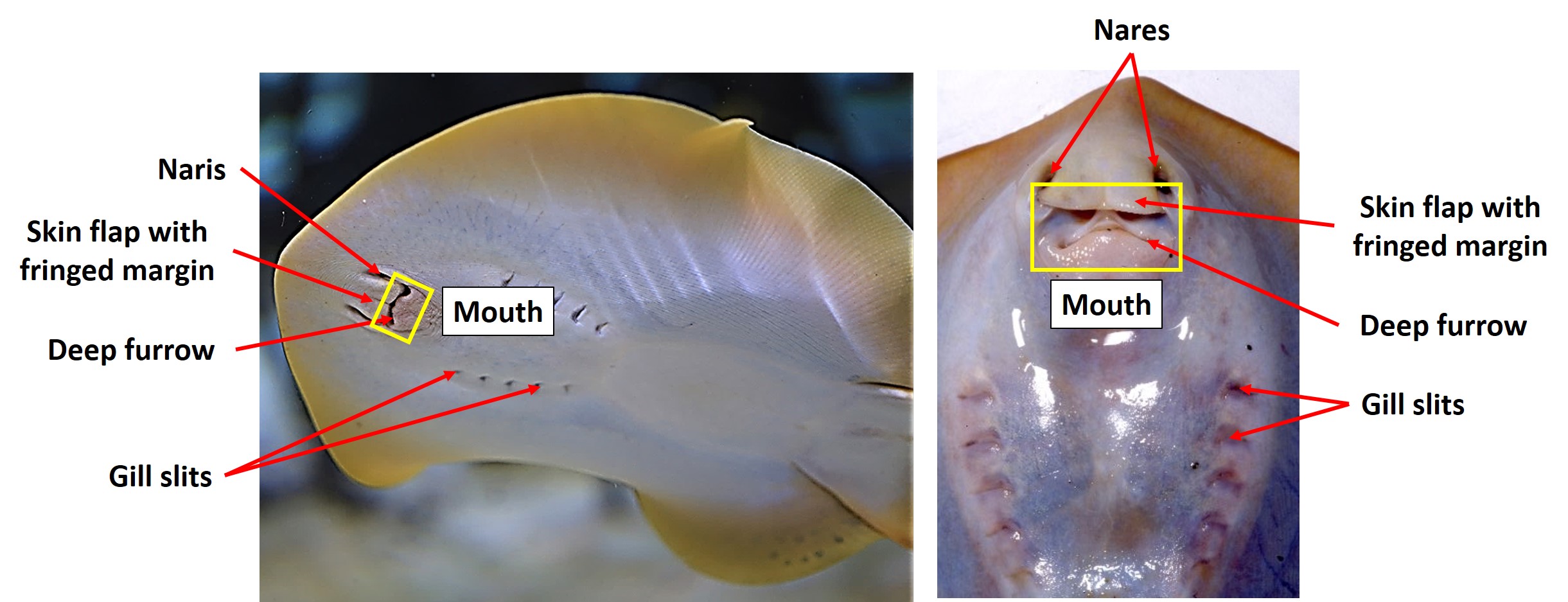 Ventral view of Stichopus hermanni. Photo: Carmon Kee© |
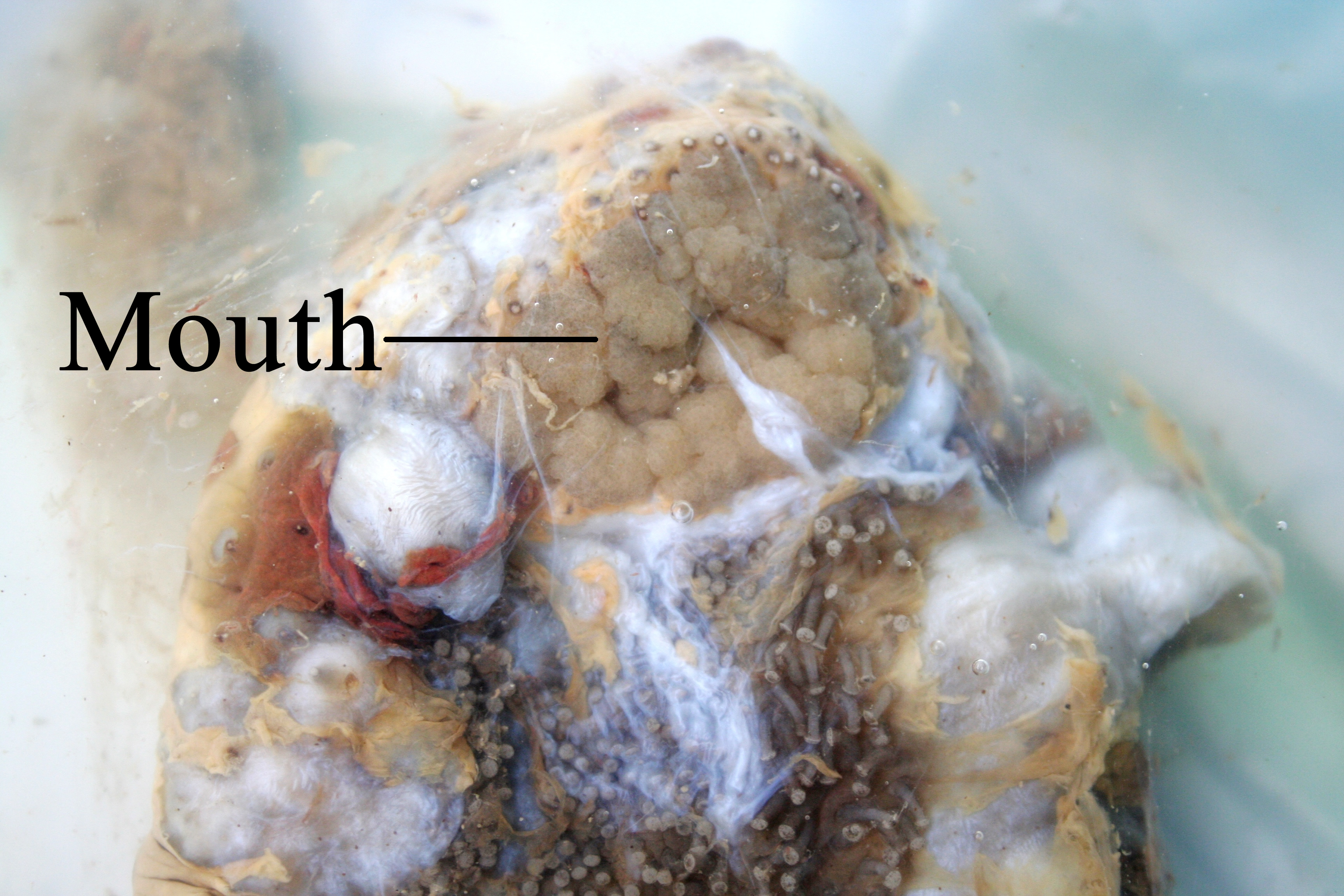 Photo: Carmon Kee© |
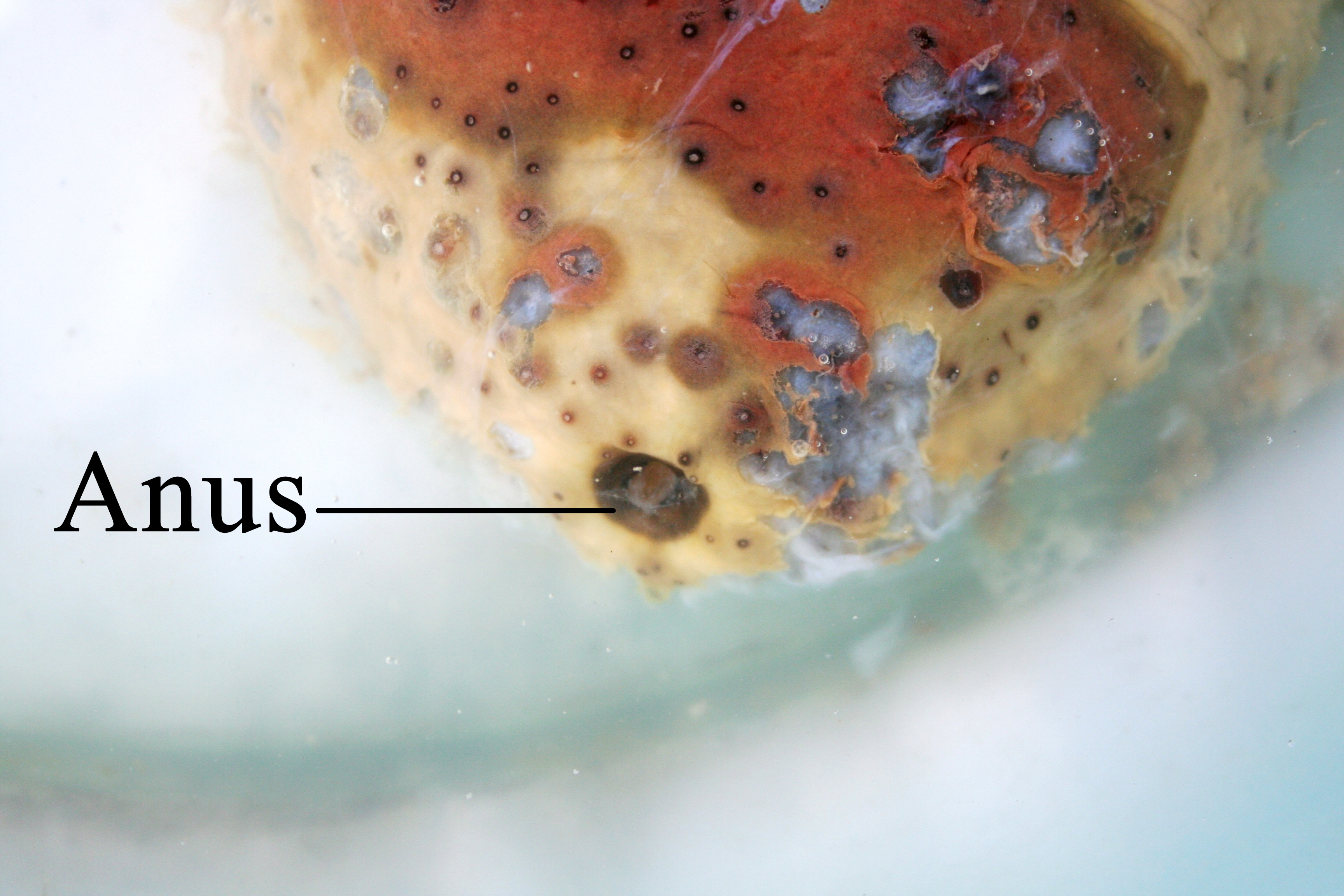 Photo: Carmon Kee© |
Order Aspidochirota identification[6]
Many oral tentacles of peltate type used to feed on the bottom.
On the trivium (ventral sole ) the podia are arranged in three rows; On the bivium (dorsal surface) they occur in modified forms as papillae.
The body wall consists of a layer of thin cuticle overlying a layer of epidermis and an underlying thick dermis of fibrous connective tissue. The spicules form the internal skeleton. These microscopic calcareous spicules are used for the identification as they occur in a wide variety of shapes and forms which can be used to distinguish between species.
Peripharyngeal calcareous ring formed of calcified plate. Five longitudinal muscles are attached to this ring.
Digestive tract is long, comprising a muscular pharynx, an oesophagus, and an intestine in three loops. The third loop going backwards terminates into a large cloaca, opening through an anus sometimes ringed with anal teeth.
Two respiratory trees terminate in the cloaca.
Cuvierian organs attached at the base of the respiratory trees. They can be expelled through the anus as a form of defense.
The reproductive system is made up of an unpaired genital gland composed of one or two tufts of tubules, terminating anteriorly by a genital papilla.
Family Stichopodidae identification[6]
- Body square-shaped or trapezoidal in cross section.
- Cuvierian organs always absent, gonad in two tufts appended on each side of the dorsal mesentery .
- Dominant spicules in branched rods and C- and S-shaped rods.
Genus Stichopus identification[6]
- Bivium covered by tubercules and papillae at least on its sides.
- Spicules develop as tables, branched rods and C and S rods.
Species identification[6]
- Medium-sized species, have mean body length of about 35 cm up to 50 cm with a firm body wall which disintegrates easily when it is under stress.
- Body hard wrinkle without large bumps, however, irregular conical warts can be seen on the bivium arranged in 8 longitudinal rows.
- Color sandy-brown or yellowish with smaller scattered papillae which are orange- brown in color in between.
Molecular techniques used in identifying processed organism
Traditionally, holothuroid families have been distinguished by means of morphological characters, such as the morphology of the dermal ossicles, the form of the oesophageal calcareous ring and the distribution and morphology of the tube feet. Differences in morphological character can be quite subtle at the species level, often obscuring taxonomic distinctions.Moreover, once caught, sea cucumbers are gutted, boiled and dried or roasted. Products are then preserved through drying, smoking or freezing.Thus, it is very difficult to identify clearly the species of processed sea cucumber on the basis of their morphology. Furthermore, the sea cucumber products usually be labeled with the local denomination according to the colour or source of the species, such as ‘black sea cucumber’, ‘red sea cucumber’, ‘American sea cucumber’ etc., Therefore, the consumers can be confused and do not know the detailed and clear information of the products at purchase level. Moreover, due to high prices and the increasing consumer demand, illegal merchants may cheat consumers for commercial benefits by adulterating, mislabeling, or substitution of a sea cucumber species for others with less value.For these reasons, it is necessary to develop analytical methods for species identification in order to detect and avoid deliberate commercial fraud as well as aiding in the scientific studies on determining which species is more heavily exploited.
The molecular biology techniques provide a robust and valuable tool for identification of the plant or animal species present in a foodstuff. Here is when the DNA barcoding technique comes in place. DNA is extracted, amplified, sequenced and compared to reliable sequences deposited in DNA database, one can identify the species via genetic method. [7]
Immediately after Stichopus hermanni is caught, it still remains intact. Photo: Carmon Kee© |
Disintergration of Stichopus hermanni taking place after it was caught. When it is under stress, despite keeping it in sea water, it will still 'melt'. Photo: Carmon Kee© |
Comparison of the size - When undergo disintergration, the size shrinks. Photo: Carmon Kee© |
Disintergration - The size shrinks and the epidermis is gone gradually. Photo: Carmon Kee© |
Philippines ( Bohol) and Samoa.
Original Description:
Semper, C. (1868). Reisen im Archipel der Philippinen. Zweiter Theil. Wissenschaftliche Resultate. Erster Band. Holothurien. Hefte iv. and v. Stichopus variegatus var. hermanni Semper, 1868Trotz der auffallenden verschiendenheit in der Färbung und den Vertheilung der Tuberkel der Rückens muss ich diese Form als eine Varietät der vorhergehenden Art bezeichnen, weil sie in der Form ihrer Kalkkörper, wie aller übrigen Organe so sehr mit jener übereinstimmt, dass eine Trennung unmöglich wird. Diese Abart ist in Bohol ebenso gemein, wie die Stammart und wird ebenso von den Eingebornen unter dem Namen , hanginan, zur Trepangkocherei benutzt. Dass ich sie überhaupt mit einem besonderen Namen bezeichnete, geschah theilswegen der grossen Verchiedenheit zwischen beiden, ganz besonders aber weil ich auch dieselben Formen unter den von GRÄFFE auf den Samoa,Inseln gesammelten Holothurien gefunden habe. Da so die Verbreitung dieser Holothurie eine ziemlich grosse zu sein scheint, und es möglich wäre, dass die eine oder andre Abart irgendwo sonst isolirt aufgefunden werden könnte, so würde ein Nichtbezeichnung einer so auffallenden varietät die Erkennung in solchen Fällen erschweren.
Tafel XV11 original drawing of Stichopus variegatus var. hermanni. Semper, 1868.
English translation:
Despite the striking differences in the color and the patterning of the tubercles of the back, I have name this species as a variant of the preceding species ( refer to S.variegatus), because they are similar in both the ossicles form and all the other organs such that separation between these two species is impossible. This variant, as well as the other species, is common in Bohol and it also bears a common name by the local people’ hanginan’ which is a common delicacy. However, I called this species by a special name, partly due to the large difference between the two, especially I've found the same forms which are supported by data collected by the GRÄFFE, on Samoa islands. Thus, it seems like this holothurian species has a wide distribution and it is possible that one or the other variant could be found isolated anywhere else, this will further complicate the identification of such variants which have strikingly different appearance. ( Translation by Carmon)Redescription of S. hermanni :
Living specimens with dorsal body wall grey-green, brown-green, sometimes yellowish brown with numerous very small orange brown to deep brown dorsal papillae. Transversal brown fold present dorsally ( their number increases with increase body size).Mouth ventral with 20 tentacles surrounded by a collar of papillae; anus terminal. Tube feet only along the ambulacral areas, on 5-7 rows in the central one and 3-4 rows in the lateral ones. Interambulacral area very narrow, giving the impression that tube feets are present all over the ventral surface.[5]Taxonomy and Nomenclature
The absence of sound taxonomic research to provide unique, stable and universal scientific names is a hindrance to successful conservation and management plans. There are around 20 large sea cucumber species in the order Aspidochirotida are fished commercially throughout the Indo-Pacific.Some are facing the threat of over exploitation or depletion. However, without clear taxonomic account, conservation and management of these species can not be carried out. Clarity over scientific nomenclature is of particular concern for the conservation and management of organisms.. For example, current moves to add some of these species to the CITES annexes are hampered by insufficient knowledge of their taxonomic status. Thus, taxonomy of a particular species of organism is extremely important. [8]
- Taxonomic Account and History
- Nomenclature- Synonyms and Etymology
Curryfish due to the brownish yellow, greenish yellow body color.
Synonyms:
Stichopus variegatus Hermanni SEMPER, 1868: 73,pl. 17, pl. 30, fig. 2.
Stichopus variegatus var. hermanni; PANNING, 1944: 33; GEORGE & GEORGE, 1987: 246.
Stichopus variegatus; ANON, 1979; FERAL & CHERBONNIER, 1986; CANNON & SILVER, 1987; CONAND, 1989; JAMES, 1989; ALLEN & STEEN, 1994; JAMES, 1994; COLIN & ARNESON, 1995; GOSLINER et al., 1996; LAMBETH, 2000; JAMES, 2001; JAMES & JAMES, 1994.
- Phylogenetic Tree and Relationship
Phylogenetic tree above shows the relationship of global commercial sea cucumber species based on Neighbor-joining analyses of 16S rRNA gene sequences. Numbers above branches indicate bootstrap values (percentage of 1000 replicates) higher than 85 from Neighbor-joining analysis. The NCBI accession numbers behind the species indicate the representative sequence of 16S rRNA gene. The G1, G2, and G3 are the three taxonomic groups [families Caudinidae (G1), Holothuriidae (G2) and Stichopodidae (G3)]. The 1–4 Clades are the four genera Holothuria (Clade 1),Bohadschia (Clade 2), Actinopyga (Clade 3) and Stichopus (Clade 4). [7]
Status in Singapore and Conservation Status Worldwide and Singapore
Singapore
This species is not common in Singapore shore and it appears to have different appearance as compared to the one found in Malaysia. It can sometimes be seen s on Pulau Semakau, among coral rubble. S.hermanni served in restaurants in Singapore is not caught locally but imported from neighbouring countries such as Malaysia, Indonesia. Thus, the demand of this species in Singapore as delicacies still encourages the exploitation of the species in the other countries indirectly.
Worldwide
According to IUCN, the status of this species is not yet evaluated.
There are a total of 52 species of tropical and sub-tropical species of sea cucumber which are commercially exploited as food. Most of them are from the families Holothuriidae and Stichopodidae, including the genus Holothuria, Actinopyga, Bohadschia and Stichopus. These sea cucumber species can be ranked as of high, medium or low commercial value based on their species, abundance, appearance, odor, color, thickness of body wall and market demand. Table below shows the most commercially valuable sea cucumber species. Stichopus hermanni is currently ranked as a low to medium value beche-de mer species due to the mutable properties of body wall which make its processing difficult. [10] However, due to the depletion of higher value sea cucumber species, exploitation of this species is increasing. Depending on the conversion factor used for the dry: wet weight of sea cucumbers, it is possible to infer that the combined catches for the Asia and Pacific regions are in the order of 20,000–40,000 tonnes/year. The fast pace of development of sea cucumber fisheries to supply the growing international demand is placing most fisheries and many sea cucumber species at risk. Still, little is known of the ecology, biology and population status of most this species which make conservation and management plans facing difficulty.
| Scientific names |
Common names |
Grade |
| Holothuria nobilis |
Black teat fish |
1 |
| Holothuria fuscogilva |
White teat fish |
1 |
| Holothuria scabra |
Sandfish |
1 |
| Holothuria scabra var. versicolor |
Golden Sandfish |
1 |
| Thelenota ananas |
Prickly red fish |
2 |
| Actinopyga mauritiana |
Surf red fish |
2 |
| Actinopyga echinites |
Brown fish |
2 |
| Actinopyga miliaris |
Black fish |
2 |
| Holothuria atra |
Lolly fish |
3 |
| Stichopus chloronotus |
Green fish |
3 |
| Stichopus hermanni |
Curry fish |
3 |
Human Use /Commercial Use
Since the Ming Dynasty (1368-1644 BC), the Chinese have been utilising sea cucumbers as a general health tonic, for medical purpose such as treating tendonitis, arthritis, and as an aphrodisiac. According to chinese ancient literature, the sea cucumber nourishes the blood (jing), tonifies kidney (including reproductive organs), and moistens dryness (especially of the intestines). Sea cucumbers are believed to to treat weakness, impotence, debility of the aged, constipation due to intestinal dryness, and frequent urination according to these records.
In modern era,dried or extracted sea cucumber is used as a form of nutritional supplement, either in capsules or tablets form. It is proven that protein made up 55% of dry body weight of a sea cucumber and the rest contains 10-16% mucopolysaccharides, specifically chondroitin sulfate and saponins. The fully dried material has a protein concentration as high as 83%. Sea cucumbers serve as a rich source of the chondroitin sulfate, which is essential in cartilage building, helps to reduce arthritis pain: as little as 3 grams per day of the dried sea cucumber has been helpful in significantly reducing arthralgia. Sulfated polysaccharides also inhibit viruses; there is a Japanese patent for sea cucumber chondroitin sulfate for HIV therapy.
On the other hand, sea cucumbers contain saponin which has a structure similar to the active constituents of ginseng, ganoderma, and other famous tonic herbs. Additional studies showed that saponins and the polysaccharides from sea cucumber have anticancer properties. East Asian countries such as Malaysia, Indonesia have been harvesting sea cucumber since ancient time. Especially in Malaysia, Malays have traditionally harvest several species of Stichopus species which is known as ‘Gamat’ for their medicinal properties. ‘Air Gamat’ or ointment made out of Stichopus species are believed to aid in wound healing, treatment of stomach ulcers, skin diseases and as a painkiller. Stichopus hermanni in particular, have been reported possess properties which have effects on painkilling, anti-inflammatory and anti-itching.
Gamat juice. Photo: Carmon Kee© |
Sea cucumber toothpaste from Safi |
Photo and Animation: Carmon Kee©
comments powered by Disqus
Reference
1. Barnes, Robert D. (1982). Invertebrate Zoology. Philadelphia, PA: Holt-Saunders International, 981–997.
2. Tehranifard, A., S. Oryan ,G.Vosoghi, 2011. Introducing a Holothorian sea cucumber species Stichopus hermanni form Kish island in the Persian Gulf in IRAN. 2011 International Conference on Environment and Industrial Innovation.
3. Desurmont, A., 2003. Papua New Guinea sea cucumber and beche-de-mer identification cards. SPC Beche-de-mer Information Bulletin, 18.
4. Castro, P. & M.E. Huber., 2010. Marine animals without a backbone. Marine Biology 8th edition. McGraw-Hill, Boston.Pp. 143-145.
5. Massins, C., Y. Zulfigar, A. S.H. Tan & S.Z. Rizal Boss, 2002. The genus Stichopus( Echinodermata: Holothuroidea) from the Johore Marine Park (Malaysia) with the description of two new species. Bulletin Van Het Koninklik Belgisch Instituut Voor Natuurwetenschappen. Biologie, 72: 73-99.
6. Bruckner, A.W. (editor). 2006. Proceedings of the CITES workshop on the conservation of sea cucumbers in the families Holothuriidae and Stichopodidae. NOAA Technical Memorandum NMFSOPR 34 , Silver Spring, MD 244.
7. Jing Wen, Chaoqun Hu, Lvping Zhang, Sigang Fan. ( 2011). Genetic identification of global commercial sea cucumber species on the basis of mitochondrial DNA sequences. Elsevier, 22, 1, 72-77.
8. Massin, C., S.Uthicke, S.W.Purcell, F.W.E. Rowe & Y. Samyn, 2009. Taxonomy of the heavily exploited Indo- Pacific sandfish complex ( Echinodermata: Holothuriidae). Zoological Journal of the Linnean Society, 155: 40–59.
9. Janies, D.,2000. Phylogenetic relationships of extant echinoderm classes. Can. J. Zool, 79: 1232-1250.
10. Conand, C., 2008. Commercial sea cucumbers and trepang markets. Fisheries and Aquaculture volume 2.
11. Aymeric Desurmont. (2003).Natural spawning observation of Stichopus hermanni. SPC Beche-de-mer Information Bulletin, 18.
